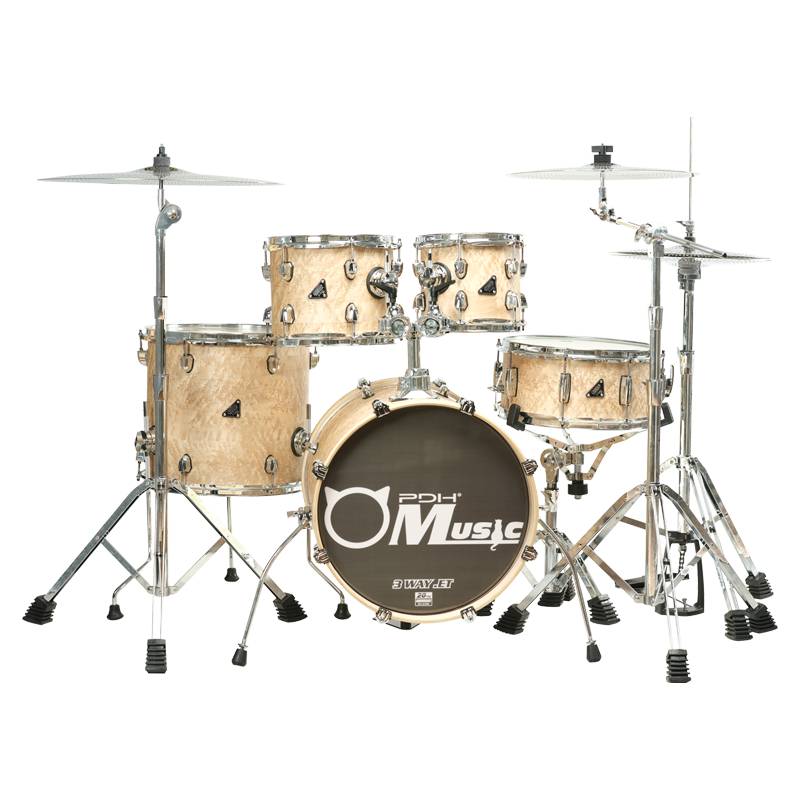Pick a flat and quiet space. The floor should be even and strong. Avoid rooms with too much echo. Choose a space with enough light. Make sure you have room to walk around the kit. Keep power outlets nearby if you use electronic gear. Close windows and doors to reduce outside noise.
A drum set is made of many parts. Bass drum, snare, toms, hi-hat, ride cymbal, and crash cymbal are the main pieces. Each part has a stand or mount. Knowing each part helps you place them well.
| Part | Function | Setup Tip |
|---|---|---|
| Bass Drum | Deep low sound | Center in front of you |
| Snare Drum | Sharp backbeat | Waist level, slight tilt |
| Hi-hat | Time keeping | Left of snare, close reach |
| Toms | Melodic fills | Arrange by size left to right |
| Cymbals | Accents & crashes | Place within easy reach |
Learn how each part affects your playing. The snare keeps the groove. The hi-hat controls time. The toms give fills. Cymbals add accents. Knowing their roles helps you play better.
Start with the bass drum. Place it in the middle of the space. Attach the pedal firmly. Angle it slightly forward for comfort. Use a rug under the drum to stop sliding. Check the spurs on each side to keep it steady. Make sure the beater hits the center of the head.
Place the snare in front of you. Adjust the height so your elbows stay relaxed. A slight tilt toward you helps with rimshots. Check that the stand holds it tight. Test with soft and loud hits. The snare should not move or buzz too much.
Attach rack toms to the bass drum mount or a separate stand. Keep a slight angle toward you. The floor tom should be level with your knee. Adjust all toms so you can strike the center without stretching. Play a few fills to test their positions.

Place the hi-hat pedal left of the bass pedal. Adjust the height so you can play heel-up or heel-down. Keep cymbals about an inch apart when open. Lock the clutch tight. Step on the pedal to test the closing sound. Make sure it feels smooth and responds quickly.
Place the ride cymbal on your right side. Keep it close so you do not overreach. Place the crash cymbal above the toms. Adjust the angle so sticks do not chip the edge. You can add a splash or china cymbal later for more sound options.
| Cymbal Type | Typical Position | Height Tip |
| Ride | Right side | Shoulder or chest level |
| Crash | Above toms | Slightly lower than ride |
| Splash | Near snare | Easy reach with one hand |
| China | Far right or left | Angle steep to hit edge |
Choose a sturdy drum throne. Adjust the height so knees form a right angle. Sit with a straight back. A good throne prevents back pain. Test by playing for a few minutes. If you feel strain, adjust height again.
Sit at the kit and check reach. You should hit every drum without stretching. Keep arms and wrists relaxed. Move stands if you twist too much. Good ergonomics protect your body during long sessions.
Play a simple beat. Adjust drums and cymbals until it feels natural. Make sure pedals are smooth. Tighten any loose stands. The goal is to play without extra effort.
Use a drum rug to cut vibration. Add rubber pads to cymbals and practice quietly. Mesh heads let you practice without loud noise. You can also use sound panels on walls.
| Sound Control Item | Purpose | Benefit |
| Drum Mat | Stops sliding | Quieter floor |
| Rubber Pads | Lowers cymbal volume | Neighbor friendly |
| Mesh Heads | Silent practice | Protect hearing |
| Wall Panels | Absorb sound | Less echo |
Check all stands weekly. Tighten wing nuts and screws. Clean shells with a soft cloth. Replace drum heads when worn. Oiling pedals keeps them smooth. A clean and tuned drum set sounds better and lasts longer.
Always sit in the same spot. Keep posture straight and shoulders loose. This helps muscle memory. Good posture makes fast playing easier. Take breaks to avoid fatigue.
Do not place drums too far apart. Avoid setting cymbals too high. Do not tilt toms too steeply. Make sure pedals are aligned with your feet. Skipping these steps may cause pain or poor playing habits.
Setting up a drum kit takes time at first. Place each part carefully and test as you go. Keep comfort, sound, and reach in mind. With practice, you will build your perfect drum set layout. A good setup lets you focus on music instrument and play with confidence.